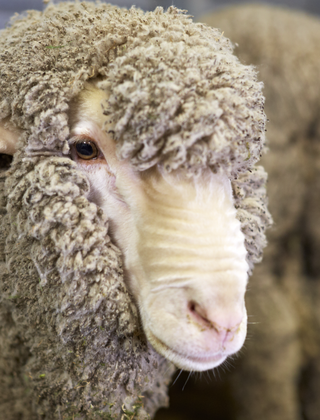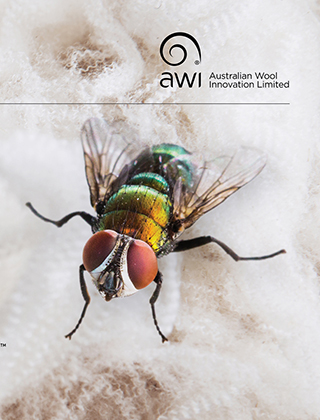FMD international outbreaks a warning for Australia

Australia has a robust strategy to minimise the potential trade impacts on the sheep and wool industries if an emergency animal disease (EAD) was to occur in this country. However, the outbreaks of foot and mouth disease (FMD) in sheep in South Africa, and the outbreak of FMD in cattle last month in Indonesia, are a timely warning for Australian livestock producers to ensure their own farm biosecurity measures are optimised.
Ruptured oral blister in a foot and mouth diseased goat in Nepal. PHOTO: Animal Health Australia
Australia has a robust strategy to minimise the potential trade impacts on the sheep and wool industries if an emergency animal disease (EAD) was to occur in this country. However, the outbreaks of foot and mouth disease (FMD) in sheep in South Africa, and the outbreak of FMD in cattle last month in Indonesia, are a timely warning for Australian livestock producers to ensure their own farm biosecurity measures are optimised.
Australia has a favourable animal health status, with freedom from many diseases present in other countries, giving us an advantage in terms of lower production/management costs, enhanced animal health and productivity, and preferential export market access.
However, CSIRO has estimated that if a multi-state foot and mouth disease (FMD) outbreak was to occur in Australia, it would cost up to $50 billion over 10 years, primarily due to the cost of trade restrictions. With 90-95% of Australian wool exported in a greasy state, a single detection of FMD could result in the loss of our ability to export greasy wool for at least six months.
As an island nation, we have a substantial advantage that allows us to control movement of goods across our borders. Australia has a world class multi-layered biosecurity system that manages the risks of pests and emergency animal diseases (EAD) entering Australia to a level that is acceptably low, but not zero. The level of risk associated with pests and diseases is ever changing and our biosecurity system is constantly positioning itself to address these changing risks, as recently observed with FMD, Lumpy Skin Disease and African Swine Fever spreading to our near neighbours.
The South African experience with FMD
As many readers will be aware, our wool-growing colleagues in South Africa have suffered a recent outbreak of FMD following an earlier outbreak in 2019. Following the 2019 outbreak, South Africa immediately lost its FMD zone free status with the World Organisation of Animal Health (OIE). This resulted in a series of bans of exports of cloven-hoofed animals, and their products (including greasy wool), by various trading partners.
“As this happened precipitously, there was no time for any role player to adjust and it had a profound impact on the entire wool value chain,” said Consulting Veterinarian to Cape Wools SA, Dr Stuart Varrie.
“The ban on the export of greasy wool was in place from February 2019 until August 2019, even though the South African National Department of Agricultural Land Reform and Rural Development (DALRRD) confirmed the outbreak to be localised. Therefore, the ban was in fact maintained due to the loss of FMD zone free status.
“During the six months of the ban, the DALRRD worked extensively with China to develop new export protocols with the necessary assurances that risks of FMD virus in greasy wool were mitigated. The new protocols required time/temperature inactivation of FMD virus as per the OIE Terrestrial Animal Health Code and approval of all wool export facilities by South African and Chinese government authorities.”
Even with these agreed protocols, the current (2022) outbreak has again resulted in the suspension of exports, highlighting the sensitivities associated with EADs.
“We really believed that the mitigation measures in place should have ensured that SA greasy wool could continue to be exported to China. This however proved not to be the case,” Dr Varrie stated.
Dr Varrie urges the Australian wool industry to take note of the South African experience.
“The lesson from this is that mitigation planning is essential. Scenario modeling for the worst possible case is indicated to allow checks and balances to be in place, where possible, prior to the crisis. Only in this way do you have the best possible chance to avoid what we went through. Even then, as we have found, it may not be enough but at least you will be some way there.”
Biosecurity measures in Australia
Australia has advanced surveillance systems, agreements and protocols in place to rapidly detect and respond to EAD incursions. The Emergency Animal Disease Response Agreement (EADRA) and AUSVETPLAN, which are administered by Animal Health Australia, set out government and industry obligations (including cost sharing) in the event of an EAD outbreak, and provide guidance on the management and control measures that may take place.
WoolProducers Australia is the EADRA signatory for the wool industry, with AWI holding $5 million in reserves on behalf of the industry for use in the event of an EAD impacting wool.
What can you do to help prevent and be prepared for an EAD outbreak in Australia?
There are various resources and support tools available to Australian livestock producers that you can add to your biosecurity tool kit. The FarmBiosecurity.com.au website offers several manuals, contacts and factsheets including a detailed EAD risk management manual (see below).
Early detection is critical if eradication is to be successful. If you see unusual signs of disease in your livestock, call your vet or the Emergency Animal Disease Hotline on 1800 675 888.
As our South African colleagues have learnt, we must not be complacent in relation to EADs; we all have a role to play to keep our animals healthy and retain our favourable market access.
More information
- Farm Biosecurity website: farmbiosecurity.com.au
- EAD risk management manual Preparing your business to survive: Risk management planning for an emergency animal disease outbreak: farmbiosecurity.com.au/toolkit/plans-manuals
- EADRA: animalhealthaustralia.com.au/eadra
- AUSVETPLAN: animalhealthaustralia.com.au/ausvetplan
This article appeared in the June 2022 edition of AWI’s Beyond the Bale magazine. Reproduction of the article is encouraged.














